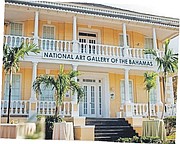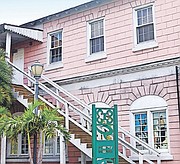APARTHEID, the system of institutionalised racism and minoritarian rule in South Africa, formally existed from 1948 to the early 1990s. It was steeped in a history of slavery, colonialism, and the warring for political and economic control between competing groups and powers.
A kleptocratic authoritarian political culture employed vicious practices of state control and violence. The country was dominated politically, socially and economically by the minority white population, mostly Afrikaners, who rationalised severe social stratification, with blacks degraded as subhuman.
The effects of apartheid continue, including the legacy of inequality and truncated versions of history of the diverse peoples and stories of South Africa. The widespread effects of apartheid perdure.
One of the pernicious legacies of this era was the propagandising and formulation of the country’s racist history from the warped, self-serving and triumphalist perspective of both the colonisers and the architects of apartheid.
To the victors and conquerors often go the spoils of how history is manufactured, packaged, or erased. The reconstruction of a broader historical narrative is difficult and demanding work for any country. It requires careful and layered research and reimaging over generations.
More diverse and accurate narratives require myriad platforms and public spaces to present and exhibit a more honest and comprehensive recording and retelling of history, including social history.
In 2001, the Apartheid Museum opened in South Africa. It is the world’s foremost museum “dealing with 20th century South Africa, at the heart of which is the apartheid story… [illustrating] the rise and fall of apartheid.”
The museum’s website notes: “An architectural consortium, comprising several leading architectural firms, conceptualized the design of the building on a seven-hectare stand. The museum is a superb example of design, space and landscape offering the international community a unique South African experience.
“The exhibits have been assembled and organised by a multi-disciplinary team of curators, film-makers, historians and designers. They include provocative film footage, photographs, text panels and artefacts illustrating the events and human stories that are part of the horrific period in our history, known as apartheid.”
South Africa realised the imperative of such a museum to help all of its citizens to better understand the history of apartheid. The Museum is an essential institution in helping South Africans to understand and wrestle with this part of their history.
Museums have an enduring and unique power to entice, to provoke and to capture the imaginations of people of diverse backgrounds, divergent views, and all levels of intellect and learning.
They are experiential platforms which foster learning, understanding, inquisitiveness – and memory.
Today, the physical space of a museum may be linked to an array of social media and interactive platforms, which can educate and inform everyone from primary school students to domestic and international researchers.
Museums are repositories of art, artefacts and archival material which help to exhibit the fecundity and complexity of the topics to which they are dedicated.
Imagine how spiritually, artistically and intellectually poorer we would be without the National Art Gallery of The Bahamas (NAGB), on whose organising committee Kim Outten Stubbs served.
Mexico has an impressive and extensive museum systems, much of which is dedicated to the history, artistry and archaeological record of its indigenous peoples. Some of the museums are breathtaking in their design and exhibits.
Throughout the Americas, there are museums and exhibits which recall the history of indigenous peoples from their perspectives, rather than that of the colonialists, both foreign and domestic.
This includes the Museum of Pre-Columbian and Indigenous Art, an ethnographic museum in Montevideo, Uruguay. The museum is dedicated to various indigenous cultures in Latin America.
Imagine the United States or Washington DC, without the Smithsonian Institution, a museum and research complex consisting of 17 museums and galleries, including art and history museums, and a zoo,
Imagine Greece or Egypt, without museums dedicated to their ancient history or Britain, without the British Museum. National museums, are not luxuries. They are vital institutions necessary for national development and the fostering of national identity.
Why after 50 years of independence are we still without a national museum? A short answer: many of our political leaders and most Bahamians have not deemed it essential.
Yes, such an institution is expensive to create and maintain, especially given other demands on the public purse. But we are paying an ever higher price for not having a museum, for which we could derive development assistance from private benefactors.
It is sad, telling of who we are as a country that we have not opened such a museum. We are falling dramatically to inculcate a deeper understanding of Bahamian civics, history, and heritage in successive generations, all of which are a part of identity formation and nurturing.
A people’s identity is related to their understanding and assimilation of their history. The National Museum of The Bahamas should be a cornerstone in fostering a greater Bahamian identity, especially given the bombardment of certain foreign influences.
As Kim Outten Stubbs insists: “A national museum defines a country in our world, as attaining a certain ‘level of civilisation’, a certain acknowledgement and accomplishment. It can certainly help to create one common identity for people of many origins and from so many islands.”
This museum would cultivate in Bahamians a greater knowledge and appreciation of our geological and social history, Lucayan history, the history of slavery and colonialism, the struggle for majority rule and independence, and post-independence history.
The cultural failure to have such a museum is near akin to not having a National Insurance Board to address social welfare and development.
That we do not have a national museums is a symptom cum reason of why we urgently need one. Could not more of the funds that were spent on ephemeral independence festivities been earmarked for the Museum!?
We boast of punching above our weight internationally but have failed to open an institution dedicated to the preservation and presentation of Bahamian history. Much of our boasting is empty, loud and superficial absent a national museum, which could also welcome millions of paying tourists.
To our credit, we established the NAGB – a quarter of a century after independence – which was realised because of a Hubert Ingraham-led government. We also established the Pompey Museum of Slavery and Emancipation.
Some of the preparatory work for the Museum was done by the late Sir Clement Maynard. Fred Mitchell promoted legislation for the Museum. Outten Stubbs and others also played vital roles in establishing the Pompey Museum.
As deputy director of the National Museum of The Bahamas, Antiquities, Monuments and Museum Corporation (AMMC), from 2015 to 2018, she led the team that curated the new permanent exhibition for the restored Pompey Museum titled, The Struggle for Freedom in The Bahamas.
The team included international museum specialists in African American History and museum exhibit design.
A former graduate assistant at the Department of African and African American Studies at the State University of New York at Albany, and a high school teacher of Bahamian, West Indian, Ancient World History, and Bahamian Civics, Outten Stubbs helped to develop varied learning spaces and platforms, particularly museums and exhibitions.
She served as curator from 1996 to 2005 at the Museum/Corporation. From 1998 to 1999, she worked in the Museum and Historic Preservation Section of the Department of Archives, which became the National Museum of The Bahamas.
Outten Stubbs was responsible for the reestablishment of the Pompey Museum following the 2001 Straw Market fire on Bay Street. She supervised museum staff at the Pompey Museum, Balcony House, and the Long Island Museum.
In 2004, she coordinated and curated the international traveling exhibition, A Slave Ship Speaks: The Wreck of the Henrietta Marie, loaned from the Mel Fisher Museum, Key West, Florida.
She coordinated in 2015, the international traveling exhibition, Lest We Forget: The Triumph over Slavery, loaned from the Schomburg Center for Research in Black Culture, New York City.
As chief curator from 2005 to 2017, Outten Stubbs was responsible for museum supervision as well as supervising the education programme and the research section.
She initiated and organised the historic military re-enactment programme at historic forts in 2013. From 2012 to 2014, she was the team leader for the Peter Mowell Exhibition for the reopening of the Pompey Museum.
She was an executive council member of the Commonwealth Association of Museums from 2013 to 2017. She is also a member of the Museum Association of The Caribbean, the American Association of State and Local History, the Museum Store Association, the Bahamas Historical Society, and a founding member of the Bahamas Archaeological Team.
Outten Stubbs has always been part of a team, which includes the staff at the Corporation/Museum, including current director, Chris Curry, and Dr Grace Turner, chief archaeologist and research officer. She also served alongside Dr Keith Tinker, the first director of the AMMC.
She enthuses: “Studying museums has given me an avenue for presentation of heritage and culture that can open doors to people in every sphere of life. Establishing a national museum has been my goal for the past 30 years, even more.”
The Bahamas is fortunate to have talent and expertise like Kim Outten Stubbs. She has dedicated her rich and varied professional life to lifting up the country and the people she loves. More of us should share her 30 years plus goal.
When we finally open the National Museum, the architects of its creation will include 2023’s Person of the Year, and perhaps more of us, who will work to ensure its opening, hopefully, in the not too distant future.







Comments
sheeprunner12 3 months, 2 weeks ago
Fifty years of Independence ...... And no national museum.
Shame on the PLP ....... They created their own system of modern economic apartheid since 1973.
Read the reports, 242 & SA have similar economic inequality stats.
Sign in to comment
Or login with:
OpenID